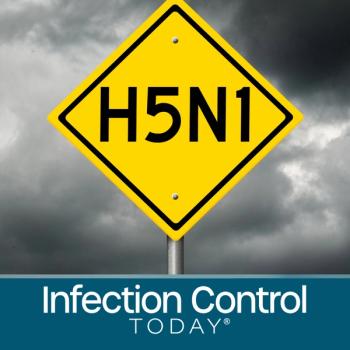
Moderna Submits COVID-19 Vaccine for FDA Approval
Efficacy against severe COVID-19 is 100%—based on the benchmark of 30 total severe cases, all in the placebo group. Consistent efficacy was seen across patient age, race and ethnicity groups, as well as gender demographics.
Moderna is submitting its application to the US Food and Drug Administration (FDA) for Emergency Use Authorization (EUA)
The submission, anticipated for Monday, would initiate a timeline that may see the mRNA platform vaccine become available for the US public as early as December 21 if the FDA finds safety and efficacy evidence to be substantial for approval.
The FDA will now decide on 2 COVID-19 vaccine EUA applications in December, including
The Vaccine
mRNA-1273 was co-developed by biotechnology company Moderna and the National Institutes of Allergy and Infectious Diseases (NIAID) Vaccine Research Center—a product first completed as a clinical batch in the first week of February, and undergoing phase 1 clinical by March 16.
As a nucleoside-modified messenger RNA (mRNA) platform-hosted vaccine, it is encoded for a prefusion stabilized form of the SARS-CoV-2 Spike protein, based on the virus’ sequencing provided by Chinese investigators at the beginning of the COVID-19 outbreak. NIAID director Anthony Fauci explained to sister publication HCPLive in a podcast interview this September that the concept of the vaccine was borne on January 11—just 1 day after the SARS-CoV-2 sequence was made public.
“I got my team together on the 11th (of January) and said, ‘We’ve got to partner with Moderna and put this in an mRNA platform.’ By the 15th, we started doing it,” he explained. “Sixty-five days later, we were in a phase 1 trial. And 7 months later, we’re in a phase 3 trial. That process would normally take a few years, but we didn’t compromise anything.”
Trial Data
The vaccine is currently being assessed in the ongoing phase 3, randomized, placebo-controlled COVE trial, in which a 100 mcg dose of mRNA-1273 is being compared versus placebo across 30,000 US adults aged 18 years and older.
The primary endpoint of assessment is preventing symptomatic COVID-19 disease with the vaccine, while key secondary endpoints including preventing severe forms of the virus, and overall infection by SARS-CoV-2.
As developed under guidance from the FDA and the National Institutes of Health (NIH), the COVE study additionally includes 7000-plus participants over the age of 65 years, as well as 5000-plus participants with chronic diseases including diabetes, severe obesity, and cardiac disease—both indicators of high severe COVID-19 risk.
Currently, these high-risk groups represent 42% of all observed patients in the phase 3 trial.
The newest data reported by COVE investigators indicated that mRNA-1273 is associated with a 94.1% efficacy rate, based on the benchmark of 196 total COVID-19 cases in the trial population.
Efficacy against severe COVID-19, however, remained at 100%—based on the benchmark of 30 total severe cases, all in the placebo group.
Investigators additionally reported consistent efficacy across patient age, race and ethnicity groups, as well as gender demographics.
Currently, the safety profile of mRNA-1273—which is under continuous review—has shown no new serious safety concerns in treated participants, and common adverse reactions including injection site pain, fatigue, myalgia, arthralgia, headache, and erythema at the injection site. The frequency and severity of such anticipated reactions were raised after the second injection of the two-dose vaccine.
Moderna investigators will submit the phase 3 data for publication in a peer-reviewed journal shortly.
Stephane Bancel, chief executive officer of Moderna, said the primary analysis of COVID-19 prevention—as well as severe COVID-19 prevention—was confirmed by the newest efficacy rate reported.
“We believe that our vaccine will provide a new and powerful tool that may change the course of this pandemic and help prevent severe disease, hospitalizations and death,” Bancel said in a
What Comes Next
Accompanied with the news of the EUA submission is the expectation the FDA will host a Vaccines and Related Biological Products Advisory (VRBPAC) meeting for mRNA-1273 on Thursday, December 17.
The intent of the meeting is for members of the FDA committee to host a discussion on the vaccine’s supporting data, before submitting their vote to either support the EUA or not—an outcome that is very historically tied to final FDA decisions.
The VRBPAC meeting is scheduled for 6 days following the planned discussion for Pfizer’s BNT162b2, which may provide clearer indication as to how Moderna’s product will be perceived and scrutinized by the panel of experts.
Following (potentially) VRBPAC support and corresponding emergency authorization, Moderna would be ready to ship approximately 20 million doses of two-dose mRNA-1273 through the US by the end of the year, with priority being recommended by the US Centers for Disease Control and Prevention (CDC) Advisory Committee on Immunization Practices (ACIP).
Moderna—which worked with the CDC, Operation Warp Speed, and federally-contracted COVID-19 vaccine distributor McKesson to be prepared for immediate manufacturing and distribution in the event of an EUA—is on track to manufacture 500 million to 1 billion doses for a global population in 2021.
Prioritization of one vaccine versus another—particularly in the case of similar platform candidates being produced by the major industry player Pfizer and expert-guided newcomer Moderna—is not something experts anticipate unless future long-term safety assessment indicates otherwise.
Sam Fazeli, of Bloomberg Intelligence,
This article originally appeared in
Newsletter
Stay prepared and protected with Infection Control Today's newsletter, delivering essential updates, best practices, and expert insights for infection preventionists.





